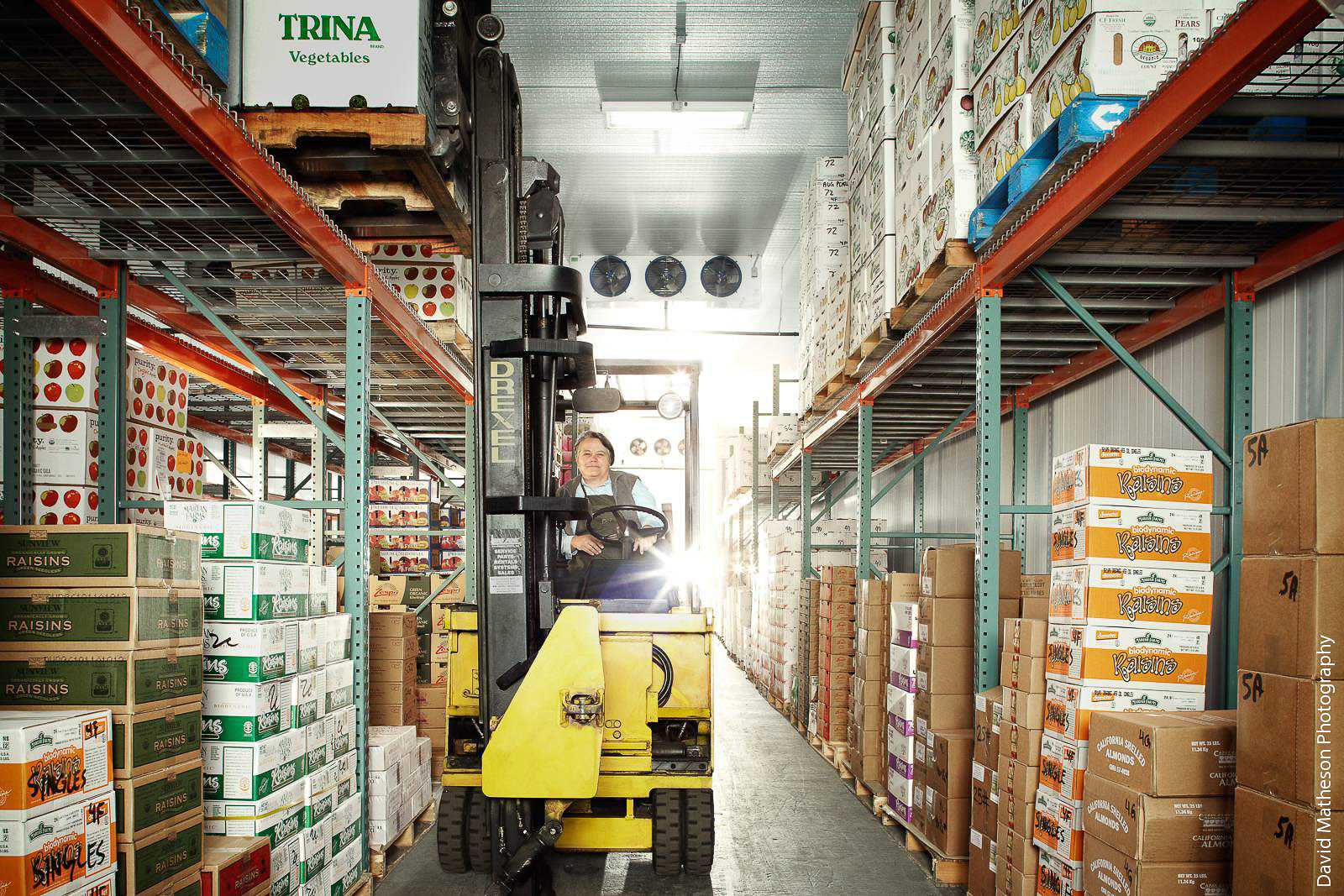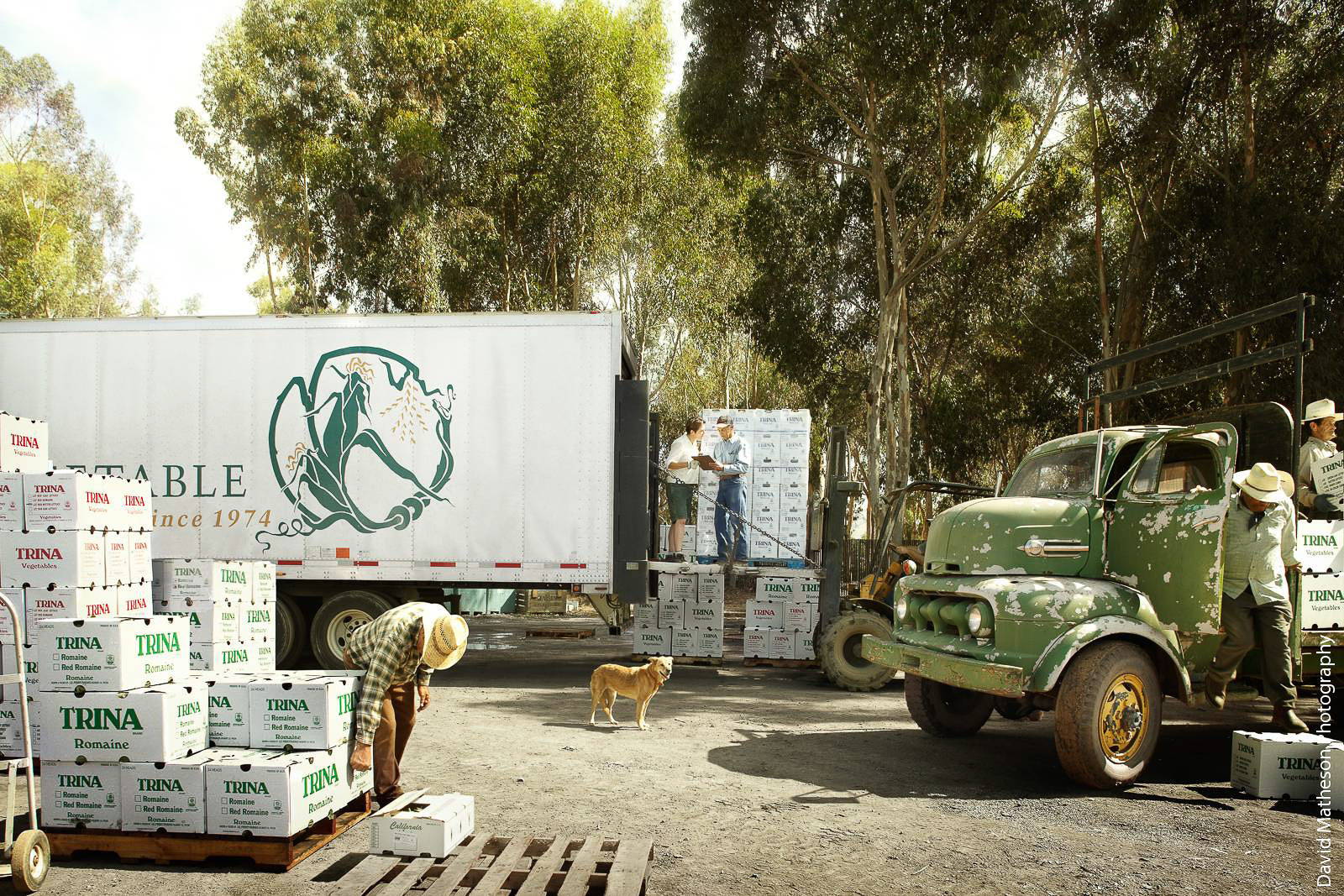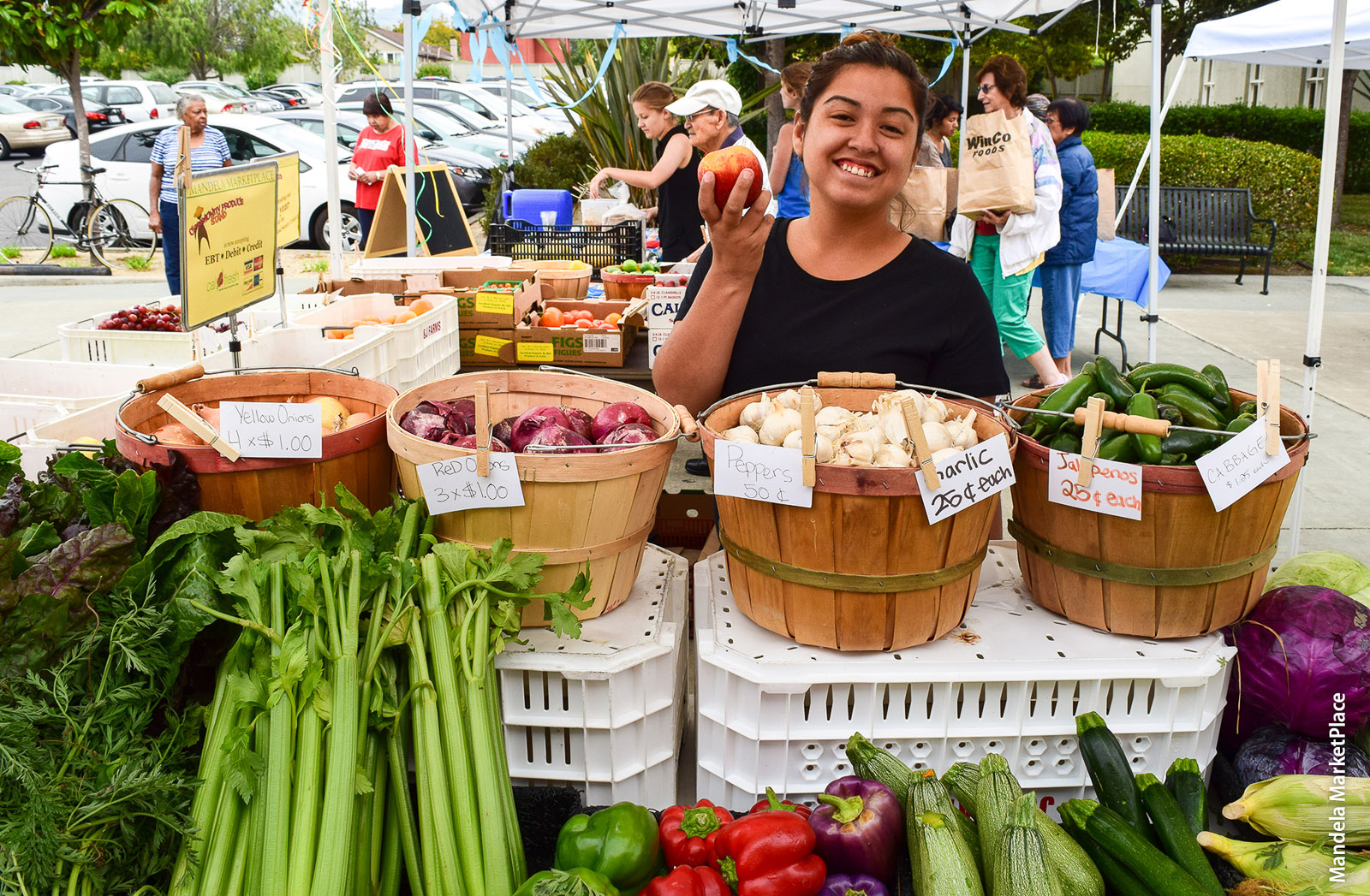All Issues
Food hubs: The logistics of local
Publication Information
California Agriculture 71(3):114-116. https://doi.org/10.3733/ca.2017a0035
Published online September 13, 2017
PDF | Citation | Permissions
NALT Keywords
Summary
Connecting small farms with big buyers — like UC campuses.
Full text
Demand for locally grown food is gaining traction, including among larger institutional buyers like UC campuses. This trend is creating sales opportunities for smaller-scale farms that would otherwise focus on direct market channels such as farmers markets and sales to restaurants.
But high-volume institutional customers often have needs — such as for consistent, large deliveries of produce — that an individual small farm can't meet.
“Food hubs” aim to bridge that gap — and GFI-funded projects run by the UC Sustainable Agriculture Research and Education Program (SAREP) are helping them do it.
Veritable Vegetable CEO Mary Jane Evans inside the company's distribution center in San Francisco. Food hubs can help connect small and mid-scale farms with institutional buyers.
Food hubs are designed to enable small and mid-scale farms to efficiently reach larger and more distant market channels like campuses and school districts, hospitals and corporate kitchens. Rather than an individual farm assuming responsibility for sales and deliveries, it can sell to a food hub, which aggregates, markets and delivers produce from many farms in a region. A key detail is that, unlike many mainstream wholesalers, food hubs identify the farms they source from by name and location. That's critical when selling to customers who are prioritizing local food.
Food hubs vary in scale from sizable, established produce businesses, like Veritable Vegetable in San Francisco and Coke Farm in San Juan Bautista, to smaller organizations, some of which are funded in part by grants.
A Veritable Vegetable truck picks up boxes of freshly harvested organic lettuce from J.E. Perry Farms in Fremont.
Food hubs are often mission-driven and seek to support sustainable and equitable food systems. They generally support higher product pricing for growers, provide a variety of support services to growers, and emphasize connecting farms and customers within a region. Some also work to improve food access for low-income communities; for example, Mandela Foods Distribution, a Mandela Marketplace social enterprise, supplies fresh fruits and vegetables that are distributed to community produce stands and corner stores in low-income neighborhoods in Oakland.
Mandela Foods Distribution in Oakland supplies fresh fruits and vegetables to corner stores and community produce stands in low-income neighborhoods.
The number of food hubs nationally has grown rapidly, from 105 to 302 over 7 years, according to a 2014 survey (ERS 2015). But there has been little regional-level information available about them: how many farms and customers they serve, what obstacles they face, and whether they are in a position to serve institutional customers.
In 2015 SAREP established a 2-year pilot project to study and support a group of seven small and midsized food hubs in California. The study collected data on the operations of the food hubs, connected them with each other and with more established food hubs, and provided training and support.
One of the inspirations for the project, said SAREP Deputy Director Gail Feenstra, was the fact that food hubs (with some exceptions) didn't appear to be capitalizing on the opportunity presented by the UC system's sustainable food procurement mandate — 20% of food from local or other sustainable sources by 2020.
“We saw a place where the food hubs could really fill an important role in helping campuses source directly from local farms,” Feenstra said. “But that wasn't happening as much as we thought it would.”
The project identified several barriers around connecting food hubs with large institutional buyers. A common problem was difficulty meeting food-safety standards, which include third-party audits of both farms and food hubs. The smaller food hubs also lacked the scale and logistical sophistication to reliably meet the needs of large customers.
However, small food hubs clearly show promise. The GFI report from the Small Growers Subcommittee, Facilitating Small Growers' Ability to do Business with UC, documents how UC Santa Barbara Residential Dining Services has already exceeded the sustainable purchasing goal, in large part due to its relationship with Harvest Santa Barbara, a relatively small food hub.
Feenstra and Gwenael Engelskirchen, a sustainable supply chain analyst with SAREP, also identified a number of strengths of the smaller regional food hubs, including their direct relationships with farms and customers, product quality and freshness, source identification, responsiveness to consumer needs, and accountability to producers in terms of product pricing and logistical support. One hub, for instance, offers a rural climate-controlled produce drop-off location that saves local farms a long trip to an urban distribution hub. Most offer one or more support services such as crop planning, food-safety trainings, trucking services and use of storage facilities, often free of charge.
Boxes of melons from Full Belly Farm in Yolo County are loaded into Capay Valley Farm Shop's truck. The truck collects produce from multiple farms in the region for delivery to buyers in the Bay Area.
The UC SAREP project produced a video on food hub best practices as well as a report on lessons learned from the pilot network. It also led to a grant from the California Department of Food and Agriculture to support food-safety training for the growers that supply these hubs. Going forward, Feenstra said, the project will broaden the network to include a larger cohort of food hubs in California and define a set of goals and objectives for the network. The project was also granted continued funding through the GFI to continue conversations with university buyers to better understand how to work within their pricing, ordering, logistical and certification requirements and leverage technical assistance to help food hubs meet those requirements.
—Editors








